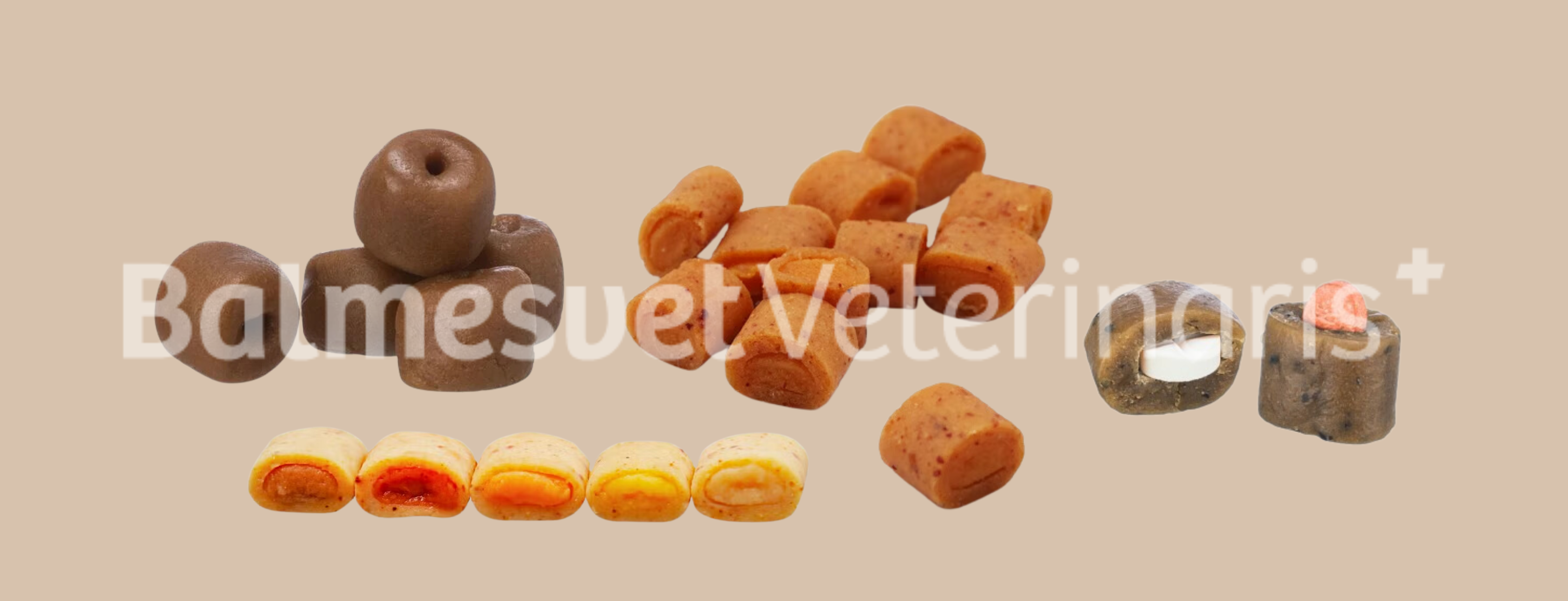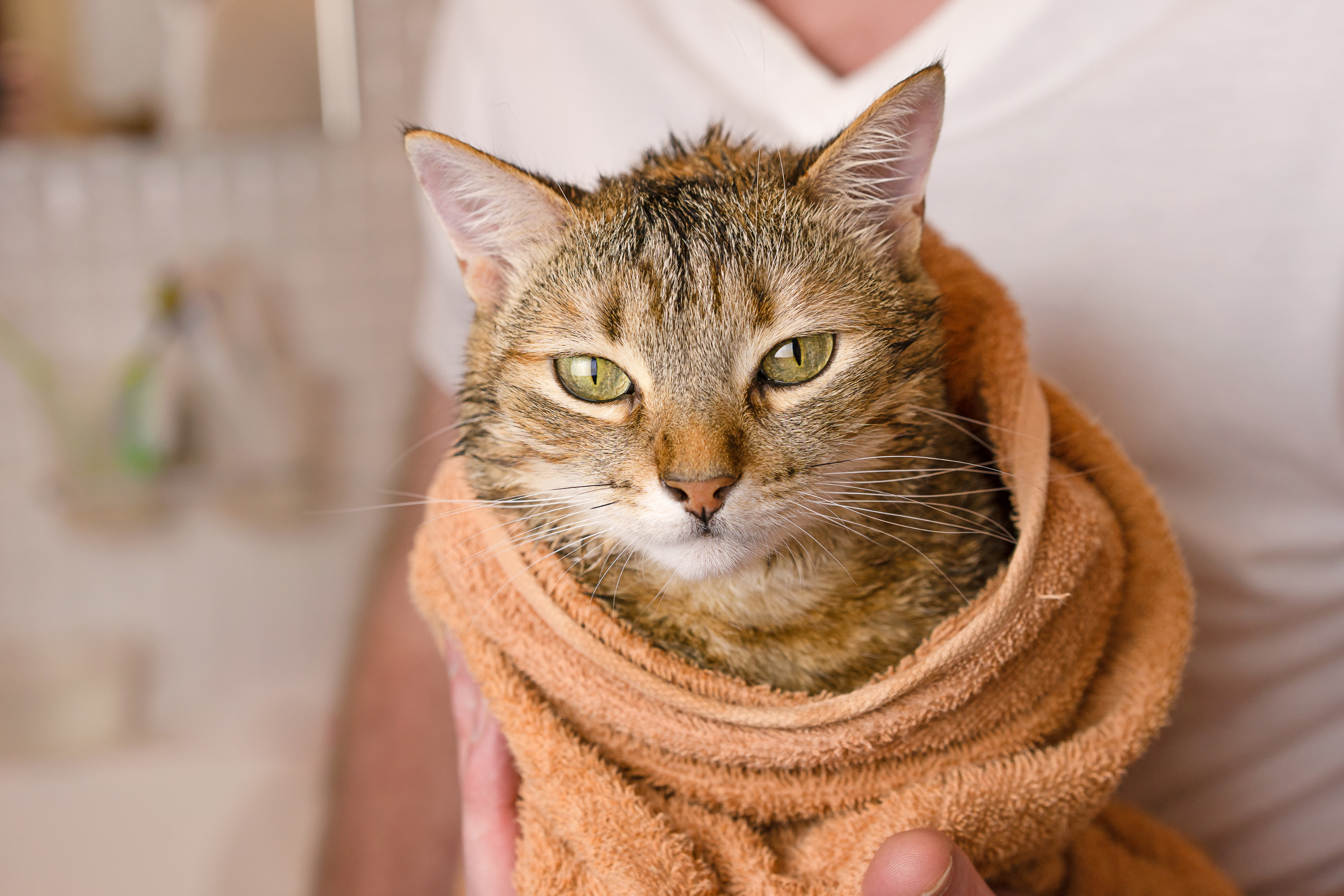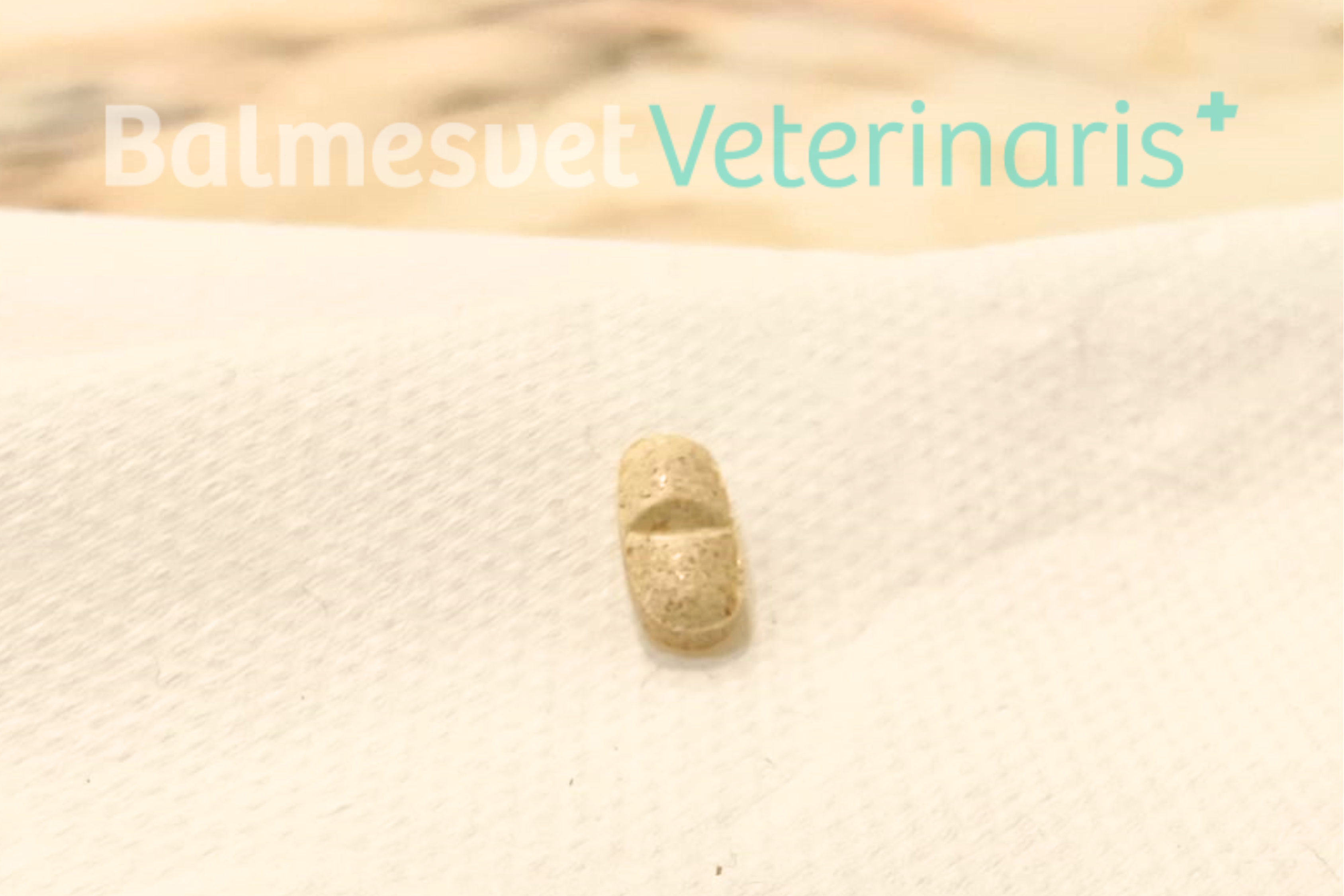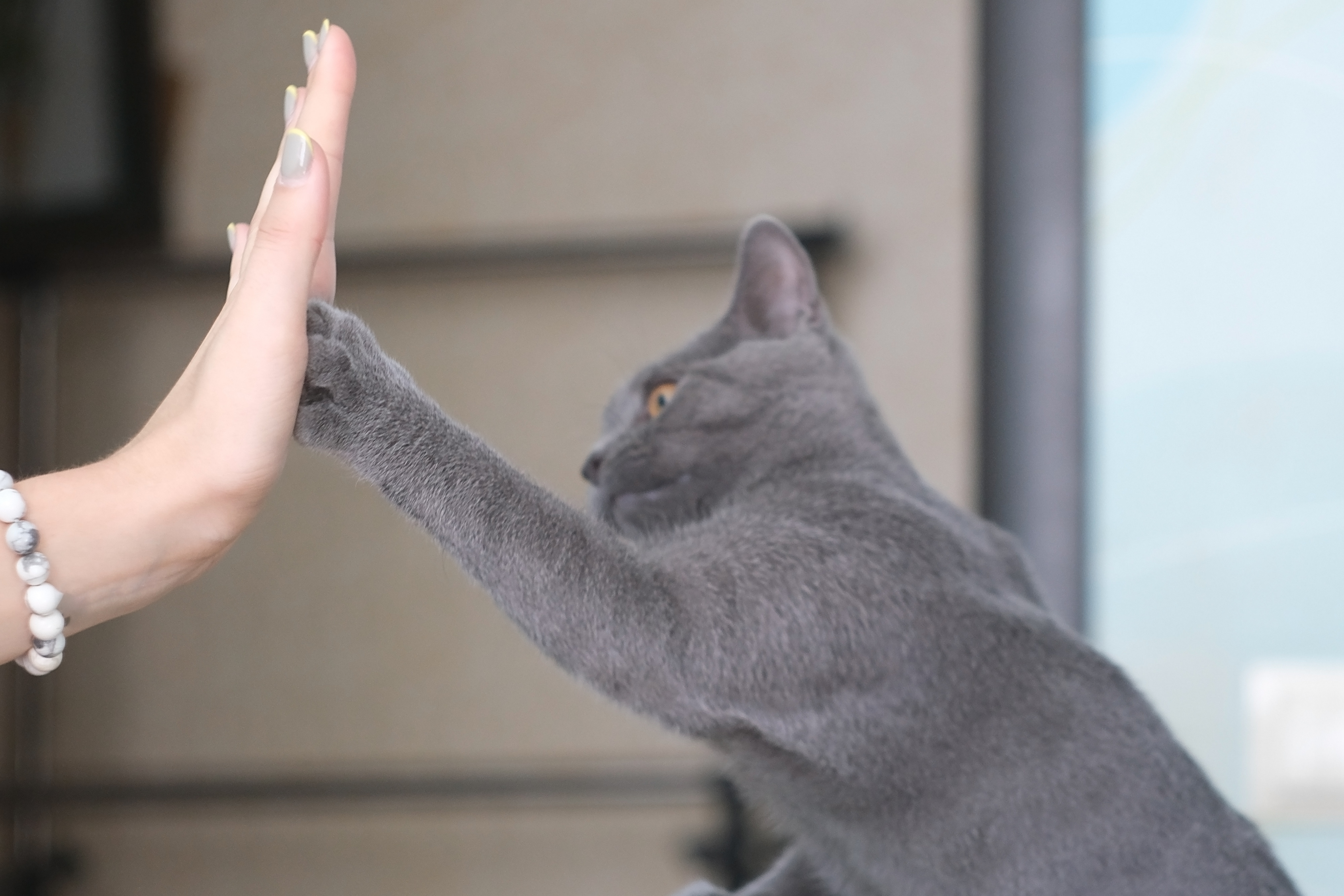Giving your cat a pill may seem like an impossible task, but with patience, planning, and the right tools, it’s easier than it seems. This guide provides step-by-step instructions to give a pill to a cat effectively and safely, minimizing stress for both you and your pet.
Before administering medication to your cat: Preparation and prior consultation
- Consult your veterinarian: Before giving your cat any medication, confirm whether the pill can be crushed, divided, or mixed with food. Some pills have special coatings or require specific administration methods.
- Prepare the area: Choose a quiet space and ensure everything is ready, including any tools you might need (e.g., towel, pill dispenser, food).
- Plan your approach: Decide if you’ll try mixing the pill with food or administering it by hand.
How to give a pill to a cat with food: Effective tips and tricks
This is one of the easiest methods, provided your cat is willing to eat.
Use a special treat instead of their regular food
When you decide to hide a pill in food, it is important to avoid using your cat’s usual food. This is because cats may develop an aversion to the food with the medication, especially if the taste or texture of the pill alters the experience.
Why not use their regular food?
- Avoid Future Rejection: If your cat associates their regular food with unpleasant tastes, they might reject it later, even without medication.
- Prescribed Diets: Cats on special diets for medical reasons (e.g., kidney disease, allergies, gastrointestinal issues) need to continue eating their prescribed food without rejection.

What foods can you use?
Offer a different, highly appealing treat, such as:
- A small amount of canned tuna in water or oil.
- A piece of plain cooked chicken (unseasoned).
- Cream cheese or butter.
- Wet cat food that is not part of their usual diet.
Products designed for giving pills to cats
If you prefer a solution designed specifically for feeding pills to your cat, there are many special products on the market that can facilitate the process:
Pill Pocket Treats: these are soft and tasty treats with a hole in the center where you can insert the pill. They are available with fillings and in different flavors, their enticing taste encourages the cat to eat them without realizing that it is being medicated. However, not all cats accept them; but, if tolerated, it is one of the most practical and effective ways to administer the medication.

Additional recommendations
- Use a small portion of the chosen food or product so the cat eats it entirely before receiving their regular meal.
- Always confirm the safety of foods or products for cats.
- Consult your veterinarian for guidance on the best method or product for your cat.
This approach minimizes the risk of rejection of their regular food and makes it easier for the medication to be successfully ingested. Remember – if you have any doubts about which foods are safe for your cat, you can contact Balmesvet for specific recommendations.
How to give a pill to a cat directly: Practical techniques and tips
If your cat doesn’t accept medication with food, you may need to give it manually.
How to restrain your cat for medication:
- On the floor or a stable surface: Wrap your cat in a towel if they’re particularly restless.
- Ask for help: Two people can make the process easier—one to hold the cat and the other to give the pill.
- Firm but gentle hold: Control their paws and stabilize their head.
How to give a pill to a cat:
- Hold the pill between your thumb and index finger, ready for use.
- With your other hand, gently hold your cat’s head from the sides and tilt it slightly back to open their mouth.
- Use the middle finger of the hand holding the pill to carefully open the lower jaw.
- Place the pill as far back on the tongue as possible, being cautious not to hurt the cat.
- Close their mouth gently and rub their throat to encourage swallowing.
- Watch for signs of swallowing, like sticking out their tongue or licking, to ensure the pill was ingested.
- Offer water with a syringe to help the pill pass through the esophagus.

Additional tricks to give a pill to a cat
Wrapping the pill in cellulose paper
Wrapping the pill in a thin layer of cellulose (like tissue paper) can help.
Why it works:
- Avoids Bad Taste: Prevents the pill from dissolving in the cat’s mouth, reducing unpleasant flavors.
- Prevents Spitting: The paper clings to the rough surface of the cat’s tongue, making it harder to spit out.
Using gelatin capsules
Another effective option for giving medication is to use empty gelatin capsules, which allow the tablet to be inserted inside, completely concealing it.
Benefits:
- Hides unpleasant taste: if a pill has a taste or texture that causes rejection, the capsule acts as a barrier, preventing it from coming into contact with the cat’s saliva and palate.
- Allows you to combine several pills: if your cat needs to take more than one pill, you can put them in a single capsule, facilitating the process.
- Holds medication in powder or liquid form: in cases where the medication is in powder or liquid form, the capsule allows you to store it safely and conveniently for administration.
- Facilitates administration: the capsule can be lightly lubricated with a little butter or oil, making it easier to swallow and reducing the chance of spitting it out by the cat.
This method is especially useful for cats sensitive to the taste of medications or when multiple treatments must be administered together. Do not forget to always give water after the cat swallows the medication.
Importance of giving water after administering the medication
When you administer a pill to your cat without food, you must not forget to give it water afterwards. This step is essential for certain medications and recommended for all.
Why it’s crucial:
Cats have a different esophageal motility, which can cause the tablet to become trapped in the esophagus, causing:
- Discomfort or irritation in the esophagus.
- Esophagitis, a painful inflammation that can become serious.
How to give water after the pill
- Prepare a syringe with water, fill it with about 5 ml. Use a syringe without a needle, making sure the water is at room temperature to avoid discomfort to the cat.
- Administer the water immediately, place the syringe gently in the side corner of your cat’s mouth and apply light pressure to gradually squeeze the water into the mouth.
- Watch your cat’s reaction and make sure that it has swallowed both the tablet and the water correctly before offering more liquid. Giving water too quickly could lead to choking or, in more serious cases, aspiration pneumonia.
Tools to make giving medicine easier
- Pill dispenser: useful for placing medication on the back of the tongue accurately and quickly.
- Pill crusher: allows to pulverize the medication to mix it with food or liquids, as long as the medication allows it.
- Gelatin capsules: option to camouflage pills and facilitate their administration. They allow the introduction of one or several medications inside, as long as it is safe to combine them, and are especially useful when powder or liquid medication needs to be administered, reducing the risk of the cat perceiving unpleasant tastes.
- Pill splitter: makes it easier to cut the medication into portions, allowing to adjust the doses more precisely according to the cat’s needs. It is a useful tool for dividing the pills into the exact portions that fit, ensuring a correct administration adapted to each case.
- Water syringe: helps to ensure that the medication goes down the esophagus correctly.
- Cellulose paper: wrapping the tablet in a small layer of toilet paper prevents it from falling apart in the cat’s mouth, minimizing the bad taste and making it easier to swallow by hooking on the taste buds of the tongue.
Why crushing the tablet, diluting it in water and giving it by syringe is not recommended
A common practice used by some caregivers to administer medication to cats is to crush the tablet, dilute it in water and administer with a syringe. Although this may appear to be an effective technique, in many cases it is not recommended.
Why it’s not ideal
- The cat’s reaction: upon contact with the taste of the diluted medication, many cats react with excessive salivation that may include foaming at the mouth, which is unpleasant for both the cat and the caregiver.
- Loss of medication: due to foaming and salivation, it is difficult to know how much of the medication has actually been ingested, which compromises the effectiveness of the treatment.
- Not suitable for all medications: some pills should not be crushed or mixed with liquids, as this may alter their effectiveness or cause unwanted side effects.
Always consult with your veterinarian before trying this method. If you need a simpler alternative for administering the medication, such as flavored tablets, gelatin capsules or food camouflage techniques, your veterinarian will be able to guide you to the most appropriate solution for your cat and its treatment.
Final advice to give a pill to a cat
Be patient and stay calm. Cats are very sensitive to stress, so a calm environment and a leisurely approach will make the process easier for both of you.
If you can’t get your cat to take the medication, don’t worry. At Balmesvet, we offer customized solutions that include hands-on demonstrations, recommendations tailored to your cat’s needs and alternatives to make it easier for your cat to comply with the treatment.
Giving your cat a pill doesn’t have to become an ordeal. With practice, patience and the right tricks, this challenge can be successfully overcome, ensuring the well-being of your feline companion.
At Balmesvet, your cat’s health and your peace of mind are our priority. We are here to help you at any time. You can visit us at Balmes 205, Barcelona, call us at 931 173 173 or send us an email to atencioclient@balmesvet.com. Together we will find the best solution to take care of your feline companion.






